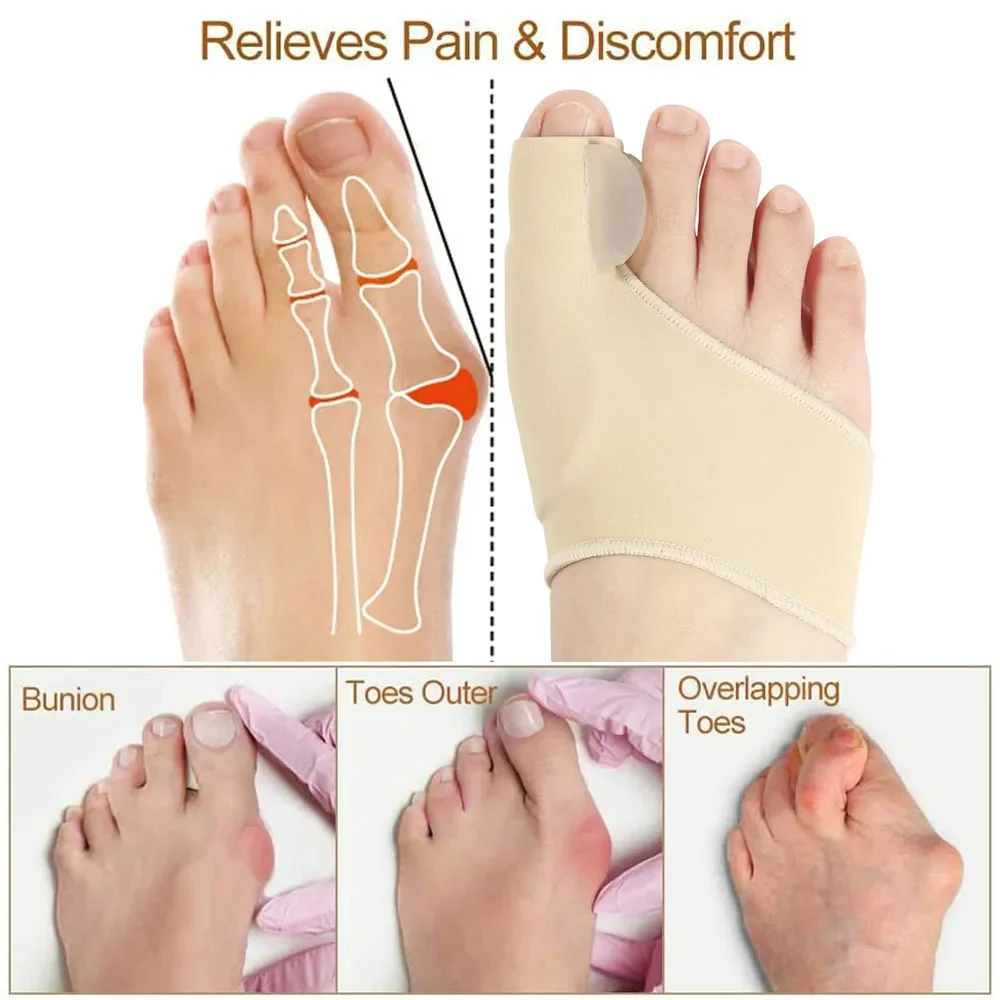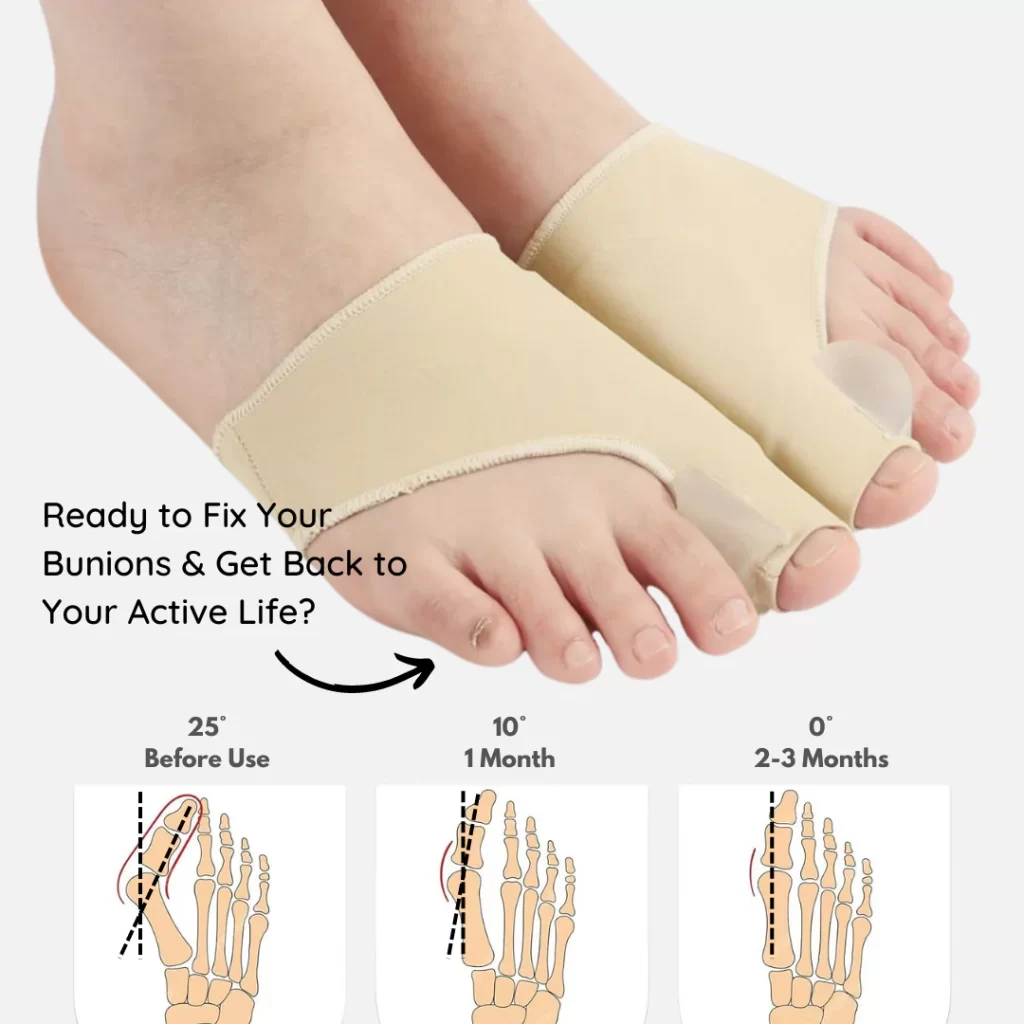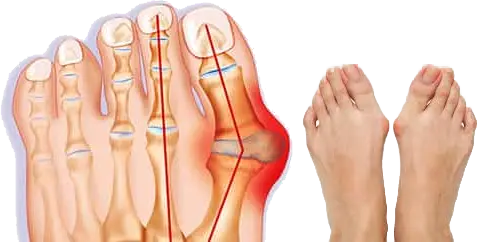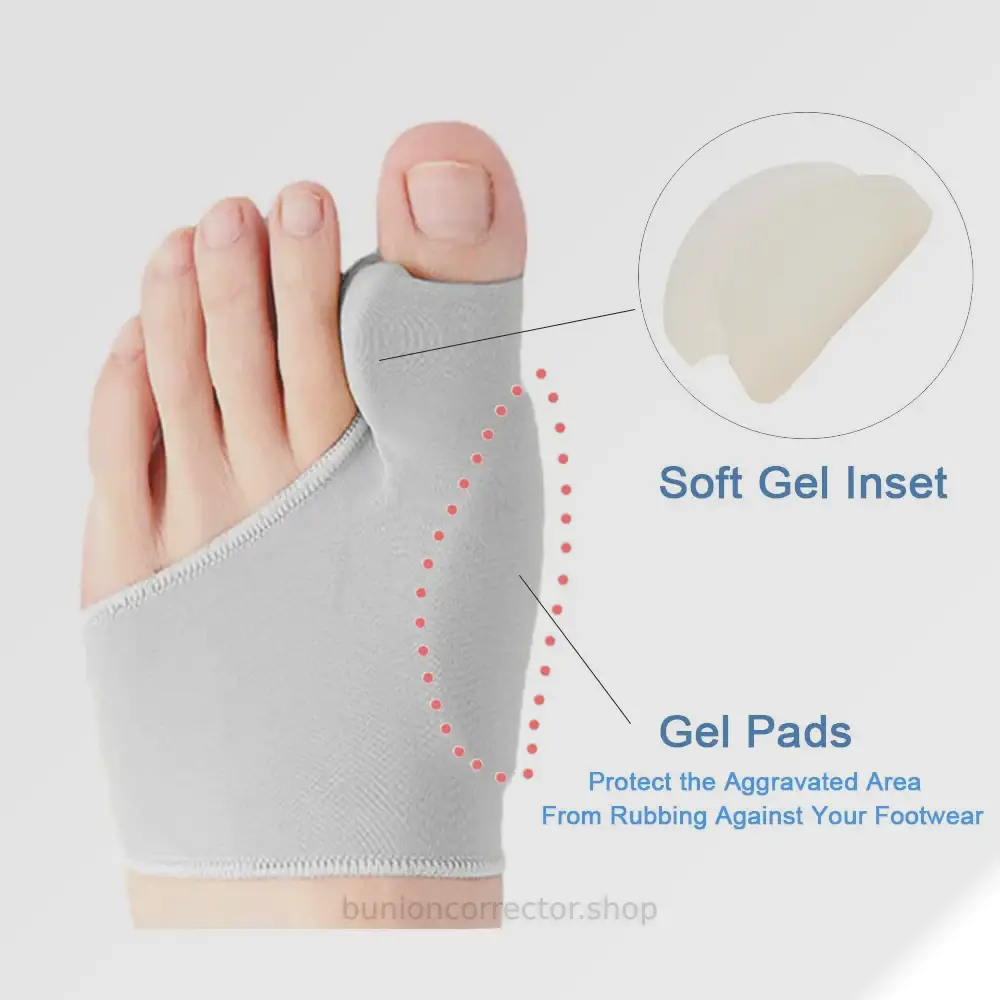Bunions can be a painful and frustrating condition, making it hard to walk, wear shoes, or go about daily activities. If you have a bunion, you’ve probably looked for ways to relieve the discomfort and prevent further damage. One of the most recommended solutions is the use of bunion correctors, especially those approved by orthopedic surgeons. In this article, we’ll take a closer look at these surgeon-approved correctors, what makes them different, and why they are a safe, effective option for bunion relief.

What Are Bunions?
Understanding Bunions
Before diving into bunion correctors, it’s essential to understand what a bunion is. A bunion is a bony bump that forms on the joint at the base of your big toe. It develops when some of the bones in the front part of your foot move out of place, causing the tip of your big toe to get pulled toward the smaller toes. This forces the joint at the base of your big toe to stick out, forming a painful lump.
Common causes of bunions include:
- Wearing tight or narrow shoes
- Genetics (inherited foot structure)
- Medical conditions like arthritis
Symptoms of Bunions
Bunions can cause a range of symptoms, from mild discomfort to severe pain. Here are a few common signs:
- Swelling and redness around the big toe joint
- A visible bump on the outside of the foot
- Pain and tenderness, especially when walking
- Restricted movement of the big toe
If left untreated, bunions can get worse over time. This is why early intervention is crucial.
What Are Bunion Correctors?
Introduction to Bunion Correctors
A bunion corrector is a device designed to realign the joint of the big toe and relieve pressure on the bunion. There are various types of bunion correctors, including splints, braces, and toe separators. These devices are worn on the foot, typically at night or during rest periods, to gently push the big toe back into its natural position.
Bunion correctors are a non-surgical treatment option and have become increasingly popular due to their convenience and effectiveness. They provide immediate relief for mild to moderate bunions and can help slow down the progression of the condition.

Why Choose Orthopedic Surgeon-Approved Bunion Correctors?
What Makes Them Special?
When choosing a bunion corrector, it’s essential to go for a product that’s been approved by medical experts, particularly orthopedic surgeons. Orthopedic surgeons specialize in the diagnosis and treatment of musculoskeletal conditions, including foot and ankle disorders like bunions. Therefore, when they recommend or approve a product, it’s usually because it meets a high standard of care and effectiveness.
Here are some key reasons why surgeon-approved bunion correctors stand out:
1. Medical Validation
Orthopedic surgeons don’t just recommend any product—they evaluate it based on clinical experience, patient feedback, and results. A surgeon-approved bunion corrector has undergone rigorous testing to ensure it aligns with medical principles and offers real benefits.
2. Quality and Safety
Products approved by orthopedic surgeons are typically made from high-quality materials that are safe for long-term use. These correctors are designed to be comfortable, durable, and effective. You can trust that the product won’t cause harm to your foot or worsen the bunion.
3. Effective Pain Relief
Surgeon-approved bunion correctors are built to provide more than just temporary relief. They are designed to target the underlying cause of bunion pain by realigning the big toe joint, reducing pressure on the bunion, and improving foot function over time.
4. Recommended for Post-Surgery Use
Many orthopedic surgeons recommend these correctors to patients who have undergone bunion surgery to help maintain proper alignment during the healing process. This not only helps prevent the bunion from coming back but also promotes faster recovery.

Types of Surgeon-Approved Bunion Correctors
Splints and Braces
Splints and braces are among the most popular types of bunion correctors. They work by holding the big toe in a straightened position, reducing the strain on the joint and alleviating pain. These are usually worn at night, as they can be bulky for daytime use.
Toe Separators
Toe separators, also known as bunion spacers, are small devices that fit between your toes. They help keep the big toe from crowding the smaller toes, which can improve foot alignment and relieve discomfort. These are more discreet than splints, making them easier to wear during the day.
Gel Pads and Cushions
Gel pads or cushions are another type of bunion corrector that provides protection and comfort by absorbing pressure and friction. While they don’t directly correct the bunion, they are often used in conjunction with other devices to make walking and standing more comfortable.

How to Use Bunion Correctors Effectively
Tips for Maximum Results
Using a bunion corrector properly is key to getting the best results. Here are a few tips to help you make the most out of your surgeon-approved corrector:
1. Consistent Use
It’s essential to wear the corrector regularly, especially at night when your foot is at rest. Consistent use will help gently realign your toe and reduce the progression of the bunion.
2. Combine with Proper Footwear
Wearing proper footwear that provides ample space for your toes can further enhance the effectiveness of a bunion corrector. Avoid tight, narrow, or high-heeled shoes that can put additional pressure on your bunion.
3. Stretching and Strengthening Exercises
To further improve your foot’s flexibility and strength, try incorporating some simple foot exercises. Stretching and strengthening the muscles around your bunion can complement the work of the corrector, helping you achieve better results over time.
Do Bunion Correctors Really Work?
What to Expect
Bunion correctors are a non-invasive, affordable, and convenient option for managing bunions. While they won’t magically eliminate the bunion, they can significantly reduce pain, improve toe alignment, and slow down the progression of the condition. For mild to moderate bunions, they are an excellent way to avoid or delay surgery.
However, if your bunion is severe or continues to cause pain despite using a corrector, it’s important to consult with an orthopedic surgeon to explore other treatment options.
Conclusion
Take Control of Your Foot Health
Bunion pain doesn’t have to control your life. With orthopedic surgeon-approved bunion correctors, you have a proven, effective solution that can help manage your condition and improve your quality of life. Whether you choose a splint, toe separator, or gel pad, these devices offer comfort, support, and relief from bunion pain.

If you’re ready to take the next step in bunion care, explore our range of orthopedic surgeon-approved bunion correctors on BunionCorrector.shop. Your feet will thank you!